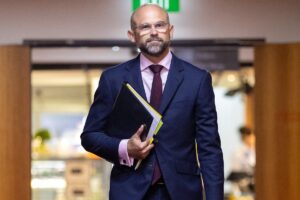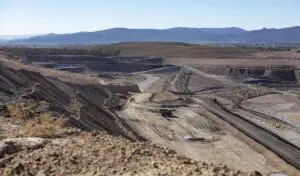This year’s conference has a broader focus
If the 2016 conference was lithium, lithium, lithium, the 2017 version has a more nuanced tone. For us the highlights were:
Pumped Hydro. At least two projects will likely be built say 500 MW
The session on pumped hydro was perhaps the highlight for your author. The fact that 95% of the existing electricity storage is pumped hydro was repeated too often and is essentially meaningless, after all 100% of phone calls were by land line until mobiles were invented, but nevertheless the looks good on a spreadsheet economics of pumped hydro seem likely to result in at least two new projects by 2020. We heard presentations from Genex, Energy Australia, Professor Blakers and Hydro Tasmania. We’ve looked at the Blakers 100% renewables scenario before Blakers review . The new Blakers information was that mapping of potential sites has continued on a state by State basis identifying seemingly endless numbers of potentially economic sites. Blakers states that 40 sq km is the land requirement to supply the entirety of the storage needed for the 100% NEM renewable path.
This was my first presentation on the EnergyAustralia’s saltwater pumped hydro project in South Australia. At the moment this 250 MW project is on track to get to FID in Q4 2018 and deliver storage from the end of 2020. It will be only the second salt water pumped hydro plant in the world. In contrast to “conventional” pumped hydro only one dam needs to be built, but the water has to be pumped 2km, most likely using reinforced plastic pipe. Round trip efficiency is expected to be around 75%. EnergyAustralia seemed convinced that this project is the lowest cost way of firming up renewable supply in South Australia.
The Hydro Tasmania presentation noted that at full capacity Tasmania’s existing hydro resource could hold 14 TWh of electricity (NEM wide annual consumption is <190 TWh) but of course there is no way to get that power to the mainland at present. Hydro Tas existing power capacity is about 50% of Snowy but Hydro Tas supplies twice the level of energy. This brings me to the second main point from today’s presentation.
Transmission planning is extensive but not coming up with the right answers. Why isn’t it priority 1 for the AEMC
Transgrid noted that there is little transmission in the renewables rich resource areas of NSW. Hydro Tas has hydro energy resource already built but not much transmission. The annual transmission planning statemenet of opportunities will be delivered by the end of this month and will likely contain more news. We note that SKI (the part owner of Transgrid) stated in its results that Transgrid had identified significant near term investment opportunities
Despite a COAG review of transmission there seems to be no change in the cumbersome and stifling regulatory approach to transmission investment.
Building transmission is no different to building a rail line or a fibre optic network or even a new road. If you build the infrastructure you open up the area for new investment.
The Blakers report calls for a new high capacity DC transmission backbone to be built in Australia. We know that the Snowy 2.0 project is likely to require up to $2 bn of new transmission investment.
We know that the US$7 bn spent by ERCOT on Texan transmission was an essential foundation of the vast increase in wind generation in that State.
There is a huge role for distributed generation in Australia, but it seems only natural that this should be married up to a modern decarbonised utility scale wind and PV generation system linked to a high capacity transmission system.
If the AEMC and AEMO could get out of the way of their own shadows perhaps they could work on some genuine reform that would look beyond the current cumbersome and seemingly short sighted approach to transmission investment and open up some of these new areas. For instance the South Australia NSW transmission link appears to be progressing only slowly.
The $300 m that the Queensland Govt has committed to North Queensland shows the way. More, much more is needed.
Lithium storage was everywhere on the showroom but news on prices was small
Presentations on lithium batteries we attended, and we only got to the utility applications seemed low key. The various services that lithium batteries can be used for at the utility scale, frequency control, peak shaving, transient management were identified but we saw zero numbers that would catch a fund manager’s attention. In Queensland residential battery installation requests are running at about 60 a month which hardly seems too thrilling if we read the onscreen graph right, albeit more than double last year.
David Leitch is principal of ITK. He was formerly a Utility Analyst for leading investment banks over the past 30 years. The views expressed are his own. Please note our new section, Energy Markets, which will include analysis from Leitch on the energy markets and broader energy issues. And also note our live generation widget, and the APVI solar contribution.









